How to Snowboard
HOW TO SNOWBOARD
The old tale about learning to ski versus learning to snowboard goes like this: Snowboarding is harder to learn than skiing, but it’s easier to master it. This all depends on who that person is and what they have natural affinities for. Nevertheless, deciding to start snowboarding is an awesome adventure that is a ton of fun.
We are here to teach you how to balance on a board and how to achieve the fundamentals of crossing the slope as well as making your first turns. This article will teach you:
- Proper Snowboard Stance
- How to Skate
- How to Glide
- How to Make a J-Turn
- How to Traverse
- How to Traverse into a Turn
- Linking Turns
LEARN THE PROPER SNOWBOARD STANCE

It is crucial to learn the proper stance on a snowboard before you hit the slopes. A relaxed body position while snowboarding will help you balance as well as control your board better and more efficiently.
Let’s get into what a basic stance should be lookin’ like:
- - Flex your knees and ankles, keeping your knees tracked over your toes.
- -Your shoulders and hips should all be in line with your board.
- -Relax your arms by your side and keep a calm upper body.
HOW TO SKATE

Once you have strapped yourself into the front binding of your board, it’s time to learn how to skate. Skating is how you are going to move around on flat ground with the front foot strapped in and the back foot pushing to move yourself along. You will need this skill to travel around on flat terrain as well as getting onto a chairlift.
- With your front foot strapped into the binding, place your back foot on the heel-side of your snowboard, slightly behind your other foot.
- Use your back foot to push yourself around.
- Take small steps.
- Don’t let your free foot go past your back bindings or you may start to do a split.
HOW TO GLIDE

Gliding is moving around the mountain on small hills with one foot strapped in and the free foot resting on the board. Gliding is going to be an important part of getting off of the chairlifts safe and sound.
- -As you get comfortable skating around on flat terrain, bring your free foot onto the middle of your board and rest it against the back binding for extra stability.
- -Practice straight gliding on a flatter surface. Then try gliding on a gentler slope with an easy runout.
HOW TO MAKE A J-TURN
The J-turn is one of the first skills you will be learning when riding a snowboard. The J-turn is how you start shaping a turn. It entails gliding straight and then turning slightly uphill in the shape of the letter… you guessed it… J. You should practice first with the front foot strapped into the binding and your rear foot resting freely on top of the board.

TOE-SIDE J TURN
- Point your snowboard straight down a gentle slope and glide forward.
- Shift your weight to the front foot and over your toes. Move your hips over the toe-side edge as you flex your ankles and knees.
- Getting your weight over that toe-side edge should start to turn the board across the hill.
- Repeat the process while you practice on a gentle slope with a flat runout.
HEEL SIDE J-TURN
- Point your snowboard straight down a gentle slope and glide forward.
- Shift your weight toward the front foot and over your heels. You should feel your calf and boot hitting the front highback (the vertical plate that comes up from the back of the binding up to your lower calf). Move your hips over your heel-side edge as you flex your ankles and knees.
- Getting your weight over that heel-side edge should start to turn the board uphill.
- Again, repeat the process while you practice turning across a gentle slope.
Tips so you don’t eat it: Despite what your parents or grandparents tell you, don’t stand up tall. For your heel side turn, keep your knees bent like you’re sitting on a chair.
HOW TO TRAVERSE
Traversing is the act of balancing and holding an edge so you can travel across the slope.

TOE-SIDE TRAVERSE
- Keep your board across the slope and on the uphill edge when you stand up so you don’t slide down the hill.
- Flex your knees and keep your weight evenly distributed over the toe-side edge while you find the balance point.
- Shift your weight toward your front foot and then let that front foot flatten a bit. You’ll start to move in the direction of the nose of your board.
- To slow down, center your weight between both feet and lean more over the edge you are standing on. Increasing the edge angle will slow you down and eventually bring you to a stop.
Tip: Move your shins toward your toes. Don’t try to balance on your tiptoes despite your inner ballerina.

HEEL SIDE TRAVERSE
- Keep your board across the slope and on the uphill edge when you stand up so you don’t slide down the hill.
- Your hips should be over the heel-side edge as you find the balance point.
- Bend your knees, as if you’re sitting down in a chair. You should feel the highback of your binding against your calves.
- Slowly shift weight toward the front foot and let that front foot flatten a bit. You’ll start to move in the direction of the nose of your board.
- To slow down, center your weight between both feet and lean more over the edge you are standing on. Increasing the edge angle will slow you down and eventually bring you to a stop.
Tip: To control the board, make small tilting adjustments. Don’t stand too tall and avoid making any larger or significant movements.
HOW TO TRAVERSE INTO A TURN
Now that you have had some practice riding across the slope, the time has come. The moment we have all been waiting for… your first real turn! Do us all a favor and try this on a gentle slope with a flat runout at first. This way, if you run into any trouble, the terrain will naturally stop you. If you happen to not listen to our advice, we wish you the best of luck but take no responsibility.
- Just as you did while traversing, start shifting your weight over the front foot.
- But this time let the board flatten so you head straight downhill (into the fall line, the most direct route downhill).
- As you flatten the board, get into a centered, athletic stance while still keeping more weight on your front foot.
- Once you’re on a flat board and in the fall line, start moving onto your new edge in a J-turn (either heel-side or toe-side).
- Aim for good body position with your arms relaxed at your sides and knees tracked over your toes. Your legs and ankles are doing the work while your upper body is calm.
- Come to a stop and practice on the other side.
Tip: Stay away from flattening the board too quickly. You may catch an edge. If you are feeling the butterflies, try this at the bottom of the run so that you’re not coming in too hot.
LINKING TURNS
When you start to feel more comfortable with the above steps, try and connect these together and move into consecutive turns.
Once you have completed a turn in one direction, continue traversing across the slope and make a turn in the opposite direction instead of coming to a stop. You’ve got this. We believe in you.
Tips: Some of the common mistakes include getting on an edge too soon as well as leaning too far to the tail of the board.
TAKE A LESSON
We can’t all be self taught prodigies. Lessons with a certified instructor with the American Association of Snowboard Instructors is highly recommended.
Remember: Safety is your responsibility. Internet articles and videos can’t replace proper instruction and experience. This article’s purpose is solely to have supplemental information to give you some things to think about. Ensure that you have practiced proper safety requirements and proper techniques before you partake in any outdoor activity. We love fun, but we love safety more!
Related Links: https://www.rei.com/learn/expert-advice/how-to-snowboard.html




